For a business to thrive, it needs to change with the times, and that requires the C-suite to lead the way. How do we, as leaders, ensure that we don’t end up as dinosaurs in this constant march of change? Discover the pressing need for businesses to adapt to the ever-changing market landscape in this thought-provoking podcast conversation with Dr. David Gruder, co-author of The Nimble C-Suite. Dr. Gruder introduces the concept of nimbility, encouraging companies to become better versions of themselves by embracing transformation, resilience, and innovation. Find out why shifting from a product and service-oriented economy to an experience economy and now to a transformation economy is essential, requiring businesses to continuously innovate and transform to remain competitive. Explore the vital role of the nimble C-suite in driving this change, all while considering the historical context of corporate charters and the impact of corporate social responsibility on governance. Tune in!
—
Listen to the podcast here
The Nimble C-Suite: Embracing Transformation, Resilience, And Innovation With Dr. David Gruder
We are now in our fourth season. I can’t believe it still. Andy, good to see you.
Good to see you, Zach, as always. I’m excited about this episode. We’re talking about a subject that I’m extremely passionate about, which is getting into business strategy structure and how a company can best tackle the marketplace and be wildly successful. We have changing times in the world, and because we have changing times in the world and in the marketplace, companies need to change the way they do things to match the change.
We’ve talked about a new business plan before or something like that.
We’re going to get eye deep in this with our guest. Our guest is Dr. David Gruder. Here is his bio so you get a little bit of background of where he has been and what he’s done. We’re going to let him come in and fill in the holes for us from the get-go. David Gruder is not just an accomplished psychologist and captivating TEDx speaker but a true trailblazer in the field of human potential and societal transformation.
As the visionary Founder of the Center for Enlightened Self Sovereignty and Integrity Revolution, Dr. Gruder has devoted many decades to the exploration of personal growth, societal change, and the profound impact of technology on both. With an impressive collection of twelve prestigious awards and a string of bestselling books, Dr. Gruder has been hailed as America’s integrity expert by Radio-TV Interview Report.
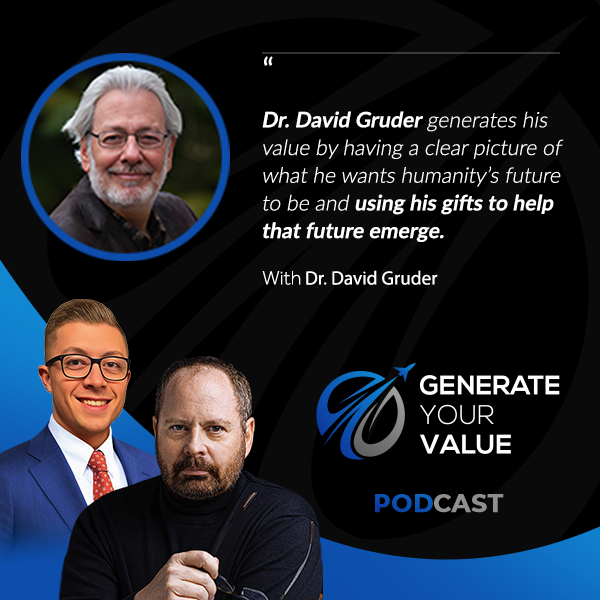
As a Board Chair Level Advisor, captivating keynote speaker, and accomplished trainer, he equips leaders, influencers, executives, helping professionals and concerned citizens with a comprehensive suite of psycho-spirituality, elevated inner mindsets, and outer skills for ushering in an enlightened future for humanity. A lot of big words there, all rightfully deserved. Let’s bring him in. Dr. David Gruder, thank you for joining Zach and I on this episode.
It’s my pleasure. Thank you so much for inviting me.
As I stated, there are lots of high-level things in your bio, not a path that a lot of people have been on in the world. Could you give our audience an overview of your career story and how it is that you find yourself where you are in life?
It’s fun being at the stage in life that I’m at. As we’re doing this, I’m approaching my 70th birthday and so I have the joy and the benefit of 20/20 hindsight being able to look back on the arc of my life in order to see how my life unfolded in ways that prepared me to do the work that I do now. I had no foresight about what that was going to look like. All I can use is hindsight.
I’ve been an entrepreneur since 1980 and I was thrust into roles that were way beyond my years starting in 1971. Leadership roles, curriculum development roles, administrative roles, and things like that I should not, by any stretch of the imagination, have been in. That’s been good for me. I was trained in master planning, which is building 50-to-100-year plans for the arc of a business about a decade before I got my Doctorate in Clinical and Organizational Development Psychology.
I’m a very odd duck as a psychologist, not only because of being trained in both clinical and organizational development work but also having that master planning strategic mindset. A lot of my colleagues in my home field of psychology don’t know how to relate to that because they haven’t been exposed to that. The result of that is that I’ve been focused in my career at the broadest level on elevating society, but one of the big leverage points for me is businesses, especially entrepreneurial businesses.
For me, that is the engine through which societal development gets to be propelled. Working at the leading edge of leader development, culture creation, and architecture of how executive suites are designed and things like that is a juicy source of passion for me. The last thing that I’ll say in the way of my background, and you’re welcome to ask any specific questions you want, but at this point in my career, I actually refer to myself as a recovering psychologist and professional troublemaker.
Entrepreneurship is the engine through which societal development gets to be propelled.
We need troublemakers in this world. Otherwise, change doesn’t happen.
Relabeled as disruptors, it’s good.
We definitely need that. It’s an undervalued area that you participate in the world. I don’t think enough people connect the dots with everything that you have been trained on and participate in. I’m a firm believer that in this world, because life is complex, we have a tendency to compartmentalize things and not study enough the dynamics, the interactiveness, and the connection between all the items that you listed. That’s part of the reason why it’s so intriguing to me because I have developed and spent my time in the coaching world trying to illustrate the folks how much overlap there is between life and business that I don’t think it’s enough conversation or interaction at all.

Unfortunately so. I’ve been an integrative-oriented person since my earliest childhood. One of my favorite solitary games as a child was dot-to-dot, connecting the dots in a diagram to see what the picture emerged from connecting the dots. It’s the way that my mind is wired, so it’s natural for me to do what you and I have found, unfortunately, which is not natural for enough people.
You and Mark S.A. Smith wrote two books, The Nimble C-Suite and The Nimble Company, that we’re going to focus in on the conversation. You were kind enough to supply me a copy of The Nimble C-Suite book ahead of time so that I could read it and be prepared best for this conversation. I have to tell you that my neck is sore from reading it because it was constantly doing this as I was reading through it.
What I’d like to do with you is start at the beginning of your thought process as you described it in the book so that our audience can understand your viewpoint the best. You started off the conversation in the book about the history, particularly in this country and, to a certain respect, the world, through the last 50 years or so that is broken up into 6 or 7 economies that we had. Would you mind quickly going through that listing of that history and give people the context as to why you say we’re now in a transformation economy?
I grew up in and around New York City, so the only version of marketing and advertising that I was exposed to and, therefore as a child, the only version I knew existed, even though it’s not the only version, was Madison Avenue. Madison Avenue advertising in the ‘50s and ‘60s, as I was growing up, was about manipulating people into creating demand for products and services that the marketing firms were selling on behalf of the producers of those products and services.
We were very much in a product or service economy in the sense that what people were being pitched and told they needed to buy was specific products or services. That orientation started to shift in the early years of this century, the early 2000s, where the marketplace evolved into wanting great experiences with the products and services that they purchased.
We moved from a product and service-oriented marketplace into what was called and is called the experience economy or the experience marketplace. One of the most well-known examples of that would be Apple. Regardless of whether you like Apple or not, that’s not the point I’m trying to make. What I’m trying to say is that Apple was an example of a company that said, “We want to create a great experience for people with a computer. We want the computer to be something more than a machine. We want people to view it as aesthetically pleasing, easy to use, and enjoyable to engage with.”
It was a high-profile example of experience economy-oriented business pivoting. That continued to evolve into roughly, give or take, 2018 when the marketplace shifted again from the experience economy to the transformation economy in which people are now, in larger and larger numbers, and we’re talking about what’s been estimated to be a $3 trillion marketplace now, the transformation economy or the transformation marketplace.
People want transformative experiences, which are transformative on top of experiences, with the products and services they buy. The marketplace has become increasingly sophisticated and the challenge that that creates. There’s an economy beyond the current one, the transformation marketplace, which we can get into if you want.
The point I want to make at the moment is that the way that businesses need to be structured and be purposed and need to function in a transformation marketplace is not compatible with the way that businesses were structured and functioned in the marketplace that was solely focused on buying products and services for the sake of the products and services themselves. Businesses haven’t known how to make that pivot into restructuring themselves to be truly compatible with and in service to the transformation marketplace. That’s what Mark Smith and I talk about in The Nimble C-Suite.

I often use Steve Jobs and Apple as an example in my coaching and when writing in my book and so forth because I talk a lot about value comes in many different shapes, sizes, and colors. In the earliest example you gave, marketing was talking about the functional value. If you have this particular problem, then buy this product. You need to hammer a nail into the wall, then I’ve got the hammer for you kind of thing. It’s about functional value.
We then moved to the Steve Jobs era, where he was bringing other values to the forefront as well, from not only the functional value of what a computer can do for you but also intrinsic value, emotional value through the actual physical design of the product, a development of a community, a development of an ecosystem of products and so forth.
You’re bringing more value in different shapes, colors, and sizes to the customer. Now in the transformation economy, we’re even adding more colors and flavors of value to the marketplace in the business. How I’ve always viewed it is from a value perspective. Part the reason why my neck hurts is you were going through it in your book. I’m like, “I’m totally aligned with you. I speak a different language about it, but it’s totally aligned.”
Dr. David, with the added sophistication that comes along with the transformation economy, would you say, if a business is going to thrive, not survive, it’s forcing them to level up and go beyond where they’ve been before?
Yes, it is definitely forcing that. A lot of businesses who are aware of that have been, for a good number of years now, creating these kinds of new and novel executive roles like chief happiness officer, as one for instance. It’s very outside the box, not part of an executive team kinds of chief roles in terms of what was used in the future. Due to that, the executive teams have become diffused and chaotic. They’re barking up the right tree and knowing they need to redesign the architecture of their executive team, but they don’t have a clear vision and framework for doing that in a precise and responsive way. They just know that something needs to change and they’re doing their best to improvise.
They’re experimenting with it to see what’s a good fit.
It’s backfired in a lot of ways.
With that, would you say that highlighting that elevated value has caused some of the divide we’re seeing on the political landscape and things like that?
Yes, because the whole field of corporate social responsibility started to gather steam in the late 1990s. This whole notion of what corporate social responsibility was originally called, and I prefer to continue to use this terminology, the triple bottom line of profitability, which is people, planet, and financial. Profitability is measured by the well-being of the people inside the company and the customer or client being served and deriving good profits in ways that aren’t harming the world, the environment, and society.
That triple bottom line of corporate social responsibility was a reflection of the direction that the society, in my opinion, has been trying to move since the 1960s, not particularly effectively. In the political or societal realms, what we’ve seen is this massive split. At the surface level, people talk about the Democrats versus Republicans, but that’s not where the split is. That’s a symptom of it.
The split is between those who are saying the thing that’s the most important is societal well-being versus the people who are saying the thing that’s most important is personal freedom. That polarization, that belief, that one of those two things is more important than the other is part of the insanity. It’s in contradiction to the United States Constitution, which establishes a country that essentially is supposed to function at the intersection of preserving personal freedom and the common good. Not making one more important than the other but engaging in the tension between those two poles.
Find the win-win.
Yes. It’s got to be a both/and. The polarization is this delusion that it’s an either/or.
It’s supposed to be an and instead of an or. In the job of governance, the function of government is to find that sweet spot between the two that’s going to maximize the freedom and the goodwill society at the same time. “How is it that we can take a particular subject and find where that sweet spot is?” We’re going to have one voice on one side and one voice on the other, have a dialogue between the two, and find out where that sweet spot is. Now we’ve got people on either side giving each other the middle finger and saying, “Screw you.”
That’s part of the collective mental illness that we’re in the midst of. The thing that’s ironic is, which your audience will appreciate, knowing what the original version of business licensing was when the United States first came into existence. It was called corporate chartering. Each state was responsible for approving requests for corporate charters in their state.
There were certain variations in the structure, but the overall structure was universal among all the states, which was that a newly formed company would apply to their state’s designated person to have their corporate charter approved. The corporate charter would be approved for some period of years, usually in the range of 9 to 12 years or so. After which, they had to reappear in front of that person and demonstrate two things.
Number one, they were profitable. They weren’t mooching. They weren’t debting in the sense of dysfunctional debt rather than healthy debt. Also, they were profiting in a way that was not at the expense of the common good. It was not at the expense of societal well-being. If they demonstrated both of those two things, their corporate charter would be renewed for another period of time. Their corporate charter could be renewed in perpetuity every so many years, as long as each time it was up for renewal, they demonstrated they were still profitable and not at the expense of societal well-being. Very simple formula, but it is completely abandoned.
As you were describing it, I kept saying to myself, “That’s not reality now.” See what happens. What I think I’m hearing you say is its lack of enforcement.
It was not just lack of enforcement, but it was a change in policy and a change in in legal precedent in the 1880s when the US Supreme Court came down with what is a questionable decision in terms of their own process. Meaning that it’s not even clear that the Supreme Court actually voted on this, but it was recorded as it was a vote that designated corporations as people, as citizens. At that point, legalized lobbying of government officials occurred.
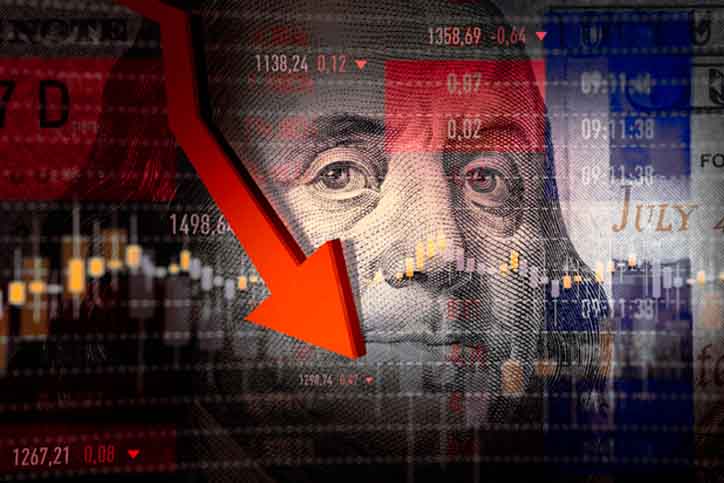
What we’ve seen over time is this takeover where special interests are pouring huge amounts of funds into influencing national and state governments to support policies and decisions that meet their own special interests, regardless of how much or how little that harms the common good. Instead of the people being represented in governance, it is special interests that are primarily represented in governance. That is a sign of mental illness in a society.
Let’s move to the next step down in your book. I want to start this next segment with a post on LinkedIn where I made the claim that people can no longer afford to not be creative in their lives with technology and moving in a direction that it is now with AI and so forth. Also, the changes in the world and in the marketplace that it is going to require. If we’re going to have the same value showing up in the world with the same monetary figures at our level or even higher, innovation’s going to have to ratchet itself up. I’m a firm believer that the engine or the fuel for creativity is love.
The fuel for creativity is love.
Let’s get into the term nimbility. You stated that the difference between agile. We’ve heard the term agile for a number of years. It came out of the IT world. How is it that we can learn from information we didn’t have before or the mistakes we made or whatever? How do we fail faster to learn so that we can shorten our development times of applications in the IT world? I had a little bit of exposure to it in my Boeing days as we were bringing in the Agile framework into the business.
If I got what you said correctly in the book, you define the difference between agile and nimbility is the speed with which an organization could change to market changes. Nimbility requires becoming a better version of ourselves because we need the tools or the skills and talents that we have when we’re a better version of ourselves to be able to react faster to changes and be more innovative. That’s the reason why we need to start thinking in a nimbility way as opposed to an agile way.
The becoming a better version of ourselves, part of that is the transformation marketplace. The notion of becoming a better version of ourselves wasn’t so important in the past in the way that businesses thought about themselves. Becoming a better version of ourselves in terms of nimbility is living at the intersection of resilience plus innovation, stability plus transformation, plus change.
Every business that’s been around for a while knows that it naturally goes through these pivot points where, in the beginning of a business, your focus is fully on innovation because in the beginning of a business, you’re bringing something new to the marketplace. Your focus has to be on innovation. If what you’ve done takes off, then you’ve got to refine your processes and figure out how to scale without scaling too fast and causing your business to implode and things like that.
You move from innovation to fruitfulness to fruition. As you are in the fruition stage, 1 of 2 things is going to happen. You’re either going to rest on your laurels and think that, “We’ve made it. Now we’re profitable. We’re fruitful. Our innovation has been good,” and then become a dinosaur like Kodak did with the camera industry or you’re going to bifurcate after the fruition phase.
You’re going to go into a third phase, which is where you’re continuing to be fruitful with what you originally innovated with and you’re looking at what’s the next innovation that continues our business’s trajectory in remaining a thought and market leader in whatever our niche happens to be. In a durable business, this is going on all the time. You’re going from innovation to fruition to bifurcation.
In the bifurcation, your next innovation is going to reach fruition and it’s going to bifurcate again into a next innovation. Businesses that aren’t constantly transforming are businesses that will become dinosaurs, sooner or later, no matter how good the product or service was that they originally developed that was originally successful. That’s nimbility in a nutshell.

It’s increasingly important. This is what I talk to my clients about all the time. When you’re looking at a why or purpose statement or whatever for your business, if you create one, and I’ll use aviation terms because that’s where I came from, if you’re picking that at the 40,000-foot level, you’re going to get yourself in trouble because you’re limiting who you are. When you have to keep innovating and innovating, you’re going to have to go outside your sandbox, per se.
It’s because you picked the dimensions of that sandbox too small by the very fact you picked a mission or purpose that was too tactical or too specific in nature, as opposed to picking one up at the 100,000-foot level. That gives you that freedom, that bigger sandbox to keep innovating and yet not lose your mission or purpose that you in the C-Suite, as well as all the other employees, can still hang on to understand and use as a guide as you move forward and keep innovating.
There’s a lot of confusion in the business world between strategy and tactics but there’s also a lot of confusion in the business world that you’re talking about between purpose and strategy because strategy is supposed to be in service to the purpose and yes. If it’s not at that 100,000-foot level, it’s not a durable purpose. It’s the old Stephen Covey line from The 7 Habits of Highly Effective People, “Begin with the end in mind.”
I think a much more useful phrasing of that is to begin with the best possible end in mind. Be audacious. Dare to transform humanity in a positive way. Start off there in terms of whatever segment of you want to focus on in your business so that your business can keep evolving toward that audacious vision through its various phases of development.
Begin with the best possible end in mind. Be audacious. Dare to transform humanity in a positive way.
It goes back to, as cliché as the saying is, if you’re not growing, you’re dying. If you’re not innovating, you become a dinosaur.
The problem is nimbility in terms of innovation plus resilience. When a company abandons innovation, they become addicted to the status quo. When they abandon organization standards, predictability, structure and stability, they squelch and stifle innovation. Classically, polarization in a company is going to be between the R and D, the innovators, research and development type individuals and executives and the folks like Chief Financial Officers and others legal folks. It’s the people whose task is to preserve resilience and stability.
When these two groups fight against each other, rather than realizing they’re the left hand and the right hand of a whole being, companies get in trouble. That’s when they silo. That’s when they get polarized instead of realizing that you’ve got to incorporate the wisdom of both innovation and resilience into all of your decision-making.

In your thought processes, as we’re going down the book, you then start a conversation about the different leadership archetypes that they are and the fact that those archetypes have a specific title within the typical C-Suite. For the readers, can you quickly list those archetypes and where they fit in the C-Suite?
Sure. First of all, what an archetype is, for those who aren’t familiar with that, is it’s a psychological term that represents a prototype that focuses on specific aspects of being human. There are basically five core archetypal energies. Let me say one more thing about that. Four of the five are paired, so 2 and 2 and then the fifth is at the intersection. If you can, think of a vertical and horizontal axis. The fifth is at the intersection of those two axes. They’re counterbalancing energies.
For example, you’ve got doing this, which is a big important part of a business, getting stuff done, that’s the warrior archetype and it is the Chief Operations Officer. The counterbalancing energy to doing this is being this. Being this is the lover archetype. The lover archetype has gotten screwed up in the business world because of the hijacking of HR, human relations, or dubbed by some of my colleagues as HR, the Department of Human Remains. I’ll explain in a moment why that’s gotten hijacked and how to unravel it.
The lover archetype and business is supposed to be about loving on our clients, our customers, so brand integrity, and loving on our own personnel so that they’re highly engaged, highly productive and highly fulfilled. As a result, the business is highly profitable. The lover archetype in businesses is missing. It’s underdressed. If you view that as the vertical, the two counterbalancing energies on the horizontal are what we were talking about before, resilience and innovation, meaning you’ve got the energy of transformation, which is the magician archetype and you’ve got the energy of stability, predictability, organization and standards. That’s the steward archetype.
The steward archetype is responsible in business. The executive roles are the stability roles like a Chief Sustainability Officer, making sure that everything is sustainable. I’m not talking about environmental sustainability, which is important too, but in this context, I’m talking about the business’ sustainability. That’s stewardship. That’s stability.
The counterbalance is innovation. It’s transformation. It’s how you keep developing better and better ways of delivering what you’re delivering or new things to deliver to your existing target marketplace, things like that. They’re the Chief Revenue People. They’re the ones that are coming up with new ways of continuing to develop new revenue streams.
Of course, at the centerpiece is the choice maker archetype. It’s the sovereign archetype that’s determining how to utilize the energies of being this, doing this stability and change on behalf of mission, preferably in service to higher wisdom, higher love and wisdom, however you can conceive of that.
This five archetype structure, I think, is the ideal executive team architecture for a transformation marketplace-oriented business. This was not needed in the product service services economy. It wasn’t needed and it wasn’t used. Pivoting into this new C-Suite architecture, which, as I said earlier, businesses are trying to do with all of these novel names for different chief officers, like Chief Happiness Officer, they’re barking up the right tree, but they don’t have the framework for making intelligent decisions about how to respond to what they’re aware needs to change. That’s basically the archetypal structure in a nutshell.
That centerpiece is the CEO.
It is the CEO.
The architect, the orchestrator, the whatever whose responsibility is how to best utilize these four energies to get the best outcome for the company.
I put a teaser in there a moment ago about HR. Can I add one thing?
By all means.
In the beginning, when HR was first conceived of out of the early years in the human potential movement in the ‘50s and the ‘60s, it was conceived of as a lover archetype role. HR was supposed to nurture and develop personnel. What HR got saddled with, however, was compliance. HR became the compliance police and compliance is a stewardship responsibility. It’s a sustainability responsibility.
It’s not a personnel development responsibility and because HR was suddenly saddled with wearing two incompatible hats at the same time, the nurturance hat and the compliance hat, HR got hijacked and HR got watered down. Guess what got sacrificed? It was the nurturance part that got sacrificed in favor of the compliance part, when in fact, again, polarization, both are important, but they’re not the same role and they can’t be done by the same people. Both of those responsibilities have to be fulfilled by different people.
Would you also say that one is much more strategic in nature and the other is much more tactical in nature between those two?
I don’t think I would because there’s a lot of strategy involved in developing a personnel development approaches and then there’s tactical implementation of training in soft skills and then embedding the utilization of those soft skills in day-to-day operations. That’s tactical stuff. At the compliance level, it’s strategic in the sense that you’re looking at the question of how do you ensure stability and standards without stifling the creativity, life force, and passion out of people? Those are strategic questions that then lead to tactical decisions in terms of policy generation and implementation.
Dr. David, we talked about not compartmentalizing earlier life business, how it translates. How do your thoughts on that structure translate or relate to a human being instead of a business and their life?
I love that you asked that question because these five core archetypes are our essential architecture as human beings. We are that. A whole human being is someone who utilizes and embodies the energies of beingness and doingness, stability and change, on behalf of our own personal purpose in service to higher love and wisdom.
We are the CEO of our own lives. If we don’t stop and smell the roses, the lover archetype, we’re going to run out of life energy. We got to keep our cup full. If we are over-focused on getting stuff done, we become doing this addicts and steamrollers. If we are over-focused on stability in our lives, we sacrifice our passion and aliveness. If we’re over-focused on transformation, then we have chaos in our lives.
We are the CEO of our own lives.
We’ve got to be all and, not one or the other. As I said before, our sense of self has to sit squarely at the intersection of being this, doing the stability and change as the orchestrator of those energies on behalf of our personal purpose and service to higher love and wisdom. This is our human design as individuals. If companies are out of alignment with that human design at a company structure level, there’s going to be unnecessary tension, complications and conflict because of that misalignment.
That’s, in a nutshell, why I’m so passionate about what I do and try to bring this to the focus of people. The overlap between life and business is that the foundational elements, the structure and everything else, is not 10%, but maybe 90% or 80% the same. If you can get one and picture one and understand how that works, then it’s easy to translate over to the other side. If more people could get that early in their life, how much easier life would be as they go down their life journey?
One of my programs is called Education and Being Human, we never got, but it is always needed. It’s because of that. What’s delicious is the intersection between human potential and business success. Unfortunately, those two realms have been separated from each other too much, not only in the business world but in the governance world.

I’ve given training programs to leaders all the way up to ambassadors to the World Trade Organization. Some of them, before I’ve gotten my hands on them, have actually held this belief that they can be effective world leaders without dealing with the human potential aspect of being human, thank you very much, because they think that the human potential movement, and they’re not entirely wrong, at least in certain circles, is narcissistic and self-absorbed. The narcissistic and self-absorbed version of human potential is self-indulgence. It’s not human potential.
Human potential to look outside ourselves.
As the audience of this show will know, one of my favorite subjects is the dynamic between love and fear. If we look at that archetype structure that you laid out, which one of the energies is based in love, how does fear play into all of it? Does it play at all? How does the fear dynamic play into it? Is there a certain archetype that needs to be paying attention to fear in its role or dynamic within the company in an effort to get the most potential or best outcome out of the company?
All of the archetypal roles are different versions of love. Love through preserving stability and standards, love through getting things done. Love through transformation and innovation, love through nurturing human potential, love through being a great orchestrator. Love has its own flavors in each of these five archetypal roles. Fear is basically, in psychology, what would be called shadow.
It’s the parts of ourselves, or in the case of a business, the parts of a business that it denies, represses, the don’t talk rules, the stuff that we don’t talk about because it seems too hot to handle or because we degenerate into going to war with each other when we bring them up. It’s dysfunctional beliefs or procedures that we indulge in anyway. All of that’s shadow and all of that’s based in fear.
Fear is simply the absence of love, or it’s simply a block. Fear is a block to the awareness of love’s presence. When a company doesn’t understand shadow, doesn’t understand the dynamics of repression and denial and unjustifiably justifying dysfunctional policies and stuff like that, then it becomes a fear-based culture because there’s an old saying actually in twelve-step traditions like Alcoholics Anonymous, we’re only as sick as our secrets. Secrets only happen when fear is present.
A business that is always shadow forward, is always looking at the question of what are we hoping we don’t have to deal with that we actually have to deal with? How do we do that in good ways? How do we have difficult discussions about touchy topics in transformative ways? Guess what? Most people in society have never been trained in how to do that. What they do is they go to war against each other at the level of surface positions.
My surface position or my premature solution is right. Anyone who doesn’t agree with my position and my solution must be wrong. That’s grandiosity. That’s narcissism. That’s thinking that in a business, one person can see the whole picture of a business. Any business worth itself is too big for one person to see the whole picture. We’ve got to synergize our puzzle pieces, like putting together a jigsaw puzzle in order for us to succeed.
I could go on for hours with this conversation. Unfortunately, our time is coming to a close. I think that’s a good spot. I can’t encourage people enough to buy and read the book. It’s fascinating. It provides a great framework for the future, for business. The question is, is business ready for it?
Consumer demand demands it.
Consumer demand demands it, but can business get out of its own way and be innovative and say, “We need to change with the times and here’s a great way forward for us to do that.” Maybe that requires that we, in the C-Suite change as individuals as well to actually level up and grow in some way to be able to make this happen. That’s what the world’s going to stand by and watch and see if business has that capability. If they do, they’re going to keep marching forward in what Simon Sinek calls the infinite game and those that can’t will go the way of the Kodaks of the world. Besides buying your and Mark’s two books, what are other ways that people could engage with you in your efforts in this area or avenue?
We need to change with the times, and that requires us in the C-suite to level up and grow in some way to make this happen.
I wear multiple hats and the best place to go is my, basically my hub site, which is DrGruder.com. From there, you can click on whatever aspect of what I do is of interest to you and you can also be in touch with me through that site as well.
Zach, over to you for our last question.
One last question, Dr. Gruder, that we always ask every guest and prompted you a little bit ahead of time, but there’s never any right or wrong answer, but what it is to you. We typically go back through, picking out some nuggets at the end of each season that stand out. What do the words generate your value mean to you?
What generate your value means to me is having a clear picture of the future that I want to see humanity and myself live into. Being clear about my own purpose and unique role in helping that future emerge for myself in the spheres of influence that I’m called to have influence in and then embodying that purpose without sacrificing my cherished relationships or my personal well-being. That to me is the essence of that phrase that I love that you have as your show’s title.
I would even add to it what internal work I need to do that enables me to do everything you laid out in your statement.
You’re right. That’s implicit and thank you for making it explicit.
From a self-leadership perspective, if I’m going to level up my game and live out the potential that I have that the universe created me for, I need to do that work that then enables me to go do those things in terms of influence and so forth in the world. You encompassed everything I had in my thought process when I picked that name from my business in this show.
It’s impossible to emphasize what you said enough because leaders lead at the level of their self-development and limitations despite their highest intentions. Good intentions are a great start, but they are far from enough.
For the audience, we can’t thank you enough for using that finite but very valuable resource in your life called time. You had a choice. We can’t thank you enough for making a choice to come read our conversation with Dr. Gruder. Hopefully, you got some what Zach and I like to call golden nuggets out of this conversation that you can use in integrating it into your life, leadership and business that helps you to live up to the potential that you were created for by the universe.
That’s our intent as to why Zach and I do the hard work to be with you every single week, bringing great guests like David Gruder to the table to have these conversations. Zach and I are doing our best to try and live out our potential exactly in the world and generate value and bring influence into the world to help the world and humanity grow from that perspective.
As I did last season, I’ll remind you again, this season, we’re creating the potential. We’re creating the seed, but that seed doesn’t plant and grow into that potential unless you see a benefit in this episode and share it in your network to others so that the seed lands and people have an opportunity to put water on it to grow by reading the episode, getting the value out of it that we created through the content and making it an impact or an influence in their own life.
We can’t encourage you enough to share this episode or any episode that we put out to enable that to occur. That being said, Zach and I here are here every week with a new episode and another great guest like David Gruder. We can’t encourage you enough to subscribe so you don’t miss an episode and have an opportunity to share it with others and get some benefit out of it. We’ll see you next time with another great episode right here on the show. Take care.
Important Links
About David Gruder
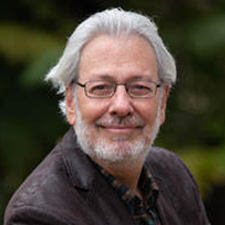
Dr. David Gruder, PhD, DCEP, is not just an accomplished psychologist and captivating TEDx speaker, but a true trailblazer in the field of human potential and societal transformation. As the visionary founder of The Center for Enlightened Self-Sovereignty and Integrity Revolution, Dr. Gruder has devoted many decades to the exploration of personal growth, societal change, and the profound impact of technology on both.
With an impressive collection of 12 prestigious awards and a string of bestselling books, Dr. Gruder has been hailed as America’s Integrity Expert by Radio-TV Interview Report. As a board chair-level advisor, captivating keynote speaker, and accomplished trainer, he equips leaders, influencers, executives, helping professionals, and concerned citizens with a comprehensive suite of psychospiritually elevated inner mindsets and outer skills for ushering in an enlightened future for humanity.
Dr. Gruder’s groundbreaking work revolves around catalyzing the emergence of the next evolutionary leap in humanity’s development beyond Homo Sapiens, coined as Homo Spiritus. This vision of our shared future seamlessly integrates personal freedom with societal wellbeing, giving rise to what he passionately calls “Spiritual Self-Sovereignty That Serves Us All.”
Through his captivating books, thought-provoking podcasts, online resources, captivating media appearances, electrifying keynotes, transformative training programs, and personalized consulting and mentoring, Dr. Gruder shares his profound wisdom on a global scale. His integrative perspectives have garnered recognition and accolades across diverse fields, including social change, conscious business and leadership, visionary leadership, culture change, health and wellness, mental health, transformational psychology, and self-help.
Dr. Gruder’s broad and deep interdisciplinary orientation sets him apart, making him the ideal individual to have founded The Center for Enlightened Self-Sovereignty. With his humble confidence and innovative approach, he continues to inspire and empower leaders, influencers, helping professionals, and concerned citizens worldwide, unlocking their true potential and propelling them towards a brighter future for both themselves and society as a whole.
